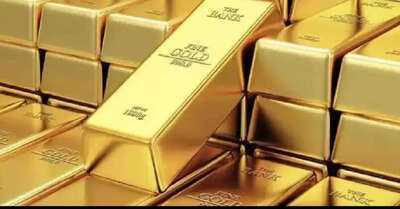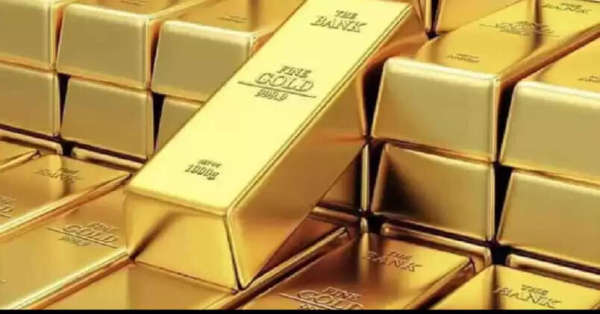

Origin of Gold: From Dying Stars to Human Treasures — The 4-Billion-Year Journey of Earth’s Most Precious Metal
The Cosmic Birth of GoldGold — one of humanity’s oldest obsessions — is far more than a shining metal. Its story begins not on Earth, but in the distant corners of the universe, billions of years ago. According to scientists, gold was not formed on Earth, but in the violent collisions of stars and supernova explosions that occurred over 4 billion years ago.
When massive stars reached the end of their lives and exploded, they created intense pressure and heat, fusing atomic particles to form heavy elements like gold and iron. These elements drifted through space as stardust. Eventually, some of this cosmic gold became part of the meteorites that bombarded the early Earth.
So, the ring glistening on your finger today was once part of a distant dying star — a reminder that gold’s brilliance truly has a cosmic origin.
How Gold Reached EarthScientists estimate that gold arrived on Earth around 4 billion years ago, during a time when meteor showers frequently struck the planet. These meteors carried small quantities of gold and other heavy elements. Over millions of years, this gold became trapped in the Earth’s crust and mantle, slowly concentrating in rivers, rocks, and sediment layers.
Because gold does not rust, corrode, or tarnish, it retained its shine through the ages — a quality that immediately fascinated early humans. Its rarity and resistance to decay made it a natural symbol of purity, power, and permanence.
Interestingly, some of the gold we find today also formed deep underground through geological processes. When earthquakes occur, mineral-rich fluids rapidly move through cracks in the rocks. As the pressure drops, gold and quartz crystallize, forming veins that miners still extract from today. Similarly, volcanic activity has played a role in bringing gold deposits closer to the surface.
How Much Gold Exists on Earth?Despite its global allure, the total amount of gold extracted from the Earth is surprisingly small. According to the U.S. Geological Survey (USGS), approximately 2,44,000 tonnes of gold have been mined throughout human history — roughly 78 million troy ounces.
Gold is incredibly dense (19.32 grams per cubic centimeter), meaning it takes up little space despite its weight. If all the gold ever mined were melted into a single cube, it would measure only about 70 feet on each side — small enough to fit inside an Olympic swimming pool.
Scientists estimate that there are still millions of tonnes of gold within the Earth’s crust and mantle. However, most of it lies far too deep to be mined economically or safely. In the planet’s core, where temperatures and pressure are extreme, there’s believed to be even more gold — but it will likely remain forever unreachable.
When Humans Discovered the Value of GoldArchaeological evidence suggests that humans began using gold around 6,000 years ago. Ancient Egyptians were among the first to craft ornaments, crowns, and religious artifacts from the metal. The gold masks found in the tombs of Pharaohs symbolized power, divinity, and eternal life.
In India, gold holds a deeply spiritual significance. Traces of gold jewelry have been discovered in the Indus Valley Civilization, and ancient texts like the Vedas and Puranas mention “Hiranya” (gold) as a symbol of wealth, purity, and prosperity.
By around 600 BCE, the ancient kingdom of Lydia (in present-day Turkey) began minting the world’s first gold coins, transforming the metal from a symbol of prestige into a foundation of global trade and economy.
The Global Gold RushAs civilizations expanded, so did humanity’s thirst for gold. Empires from Rome to China, and from India to the Arab world, used gold to mint coins, back their economies, and display royal wealth.
During the Middle Ages, Europe’s hunger for gold drove explorers to distant lands — even leading to the discovery of America. The quest for gold shaped wars, colonization, and economic systems. Events like the California Gold Rush of the 19th century transformed entire continents and gave rise to modern mining industries.
Gold in the Modern WorldEven in today’s digital age of cryptocurrencies and paper money, gold remains the ultimate store of value. It is considered a “safe haven” asset, meaning investors flock to it during economic uncertainty. Central banks around the world — including India’s Reserve Bank — continue to accumulate gold reserves to strengthen their economies and reduce dependence on currencies like the U.S. dollar.
Despite all technological advances, gold still symbolizes stability, trust, and security. Its market value continues to soar, reflecting not just its rarity but also its enduring emotional and economic appeal.
A Bond Between Stars and HumanityGold’s story is one of cosmic explosions, geological wonders, and human fascination. From the heart of dying stars to the hands of modern investors, gold has traveled an incredible journey across billions of years.
It has witnessed the rise and fall of empires, adorned kings and queens, and served as a timeless measure of wealth. More than a metal, gold represents humanity’s eternal pursuit of beauty, value, and immortality — a celestial gift that continues to shine on Earth.
-
PM Modi’s 24-Year Legacy: The Vision Bharat AI Filmmaking Challenge Is Open, Are You Ready?

-
Vivo v60e launched in India: 200MP camera, 90W fast charging and powerful battery; Deets inseide

-
Who is Ragini Das? Google rejected 12 years ago, now the head of Google India startups became

-
India to Host Global Research Symposium on Ai and Its Impact in Feb 2026 | Technology news

-
Did Dhoni leave CSK? Mi’s jersey appears, fans were shocked; Know what is the truth
